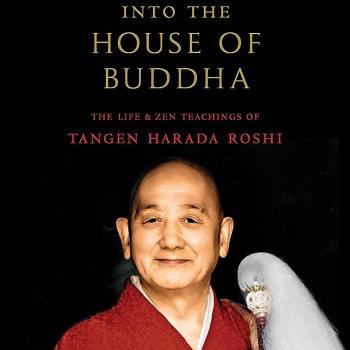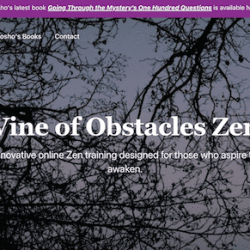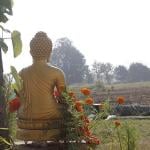 Notes: the photo is a sculpture by James Hunoldt and this is a slightly modified version of what I just posted on the training blog.
Notes: the photo is a sculpture by James Hunoldt and this is a slightly modified version of what I just posted on the training blog.
In the study group on Thursday we worked through part of a commentary by Sen’ne, a 13th century Zen guy, on the genjokoan. I’ll try to present the heart of it here.
And then there is digesting the material and actualizing it in our practice and life. After 30 years, I’m still amazed and the depth and subtlety of the presentation of our dharma ancestors and how this is an endless journey.
Sen’ne doesn’t have much to say about the first character, gen. Nelson Character Dictionary says this gen means “present, existing, actual.”
About jo Sen’ne says, “We should carefully think over this word jo (成).” Our practice is to reflect deeply on this life – deep, clear reflection is really at the heart of what we can offer the world wondering-in-circles of analysis split off from heart and body.
Nelson has this on jo: “become, get or grow (old), form (a part of).” For the two characters together, genjo, Nelson has “existing state of affairs, present situation, status quo.”
This is close to how most translators present genjo but Sen’ne seems to have taken those ingredients and cooked a feast.
Let’s start with his usage of jo or become. This isn’t a small thing – it goes to the heart of what it means to become Buddha. Sen’ne: “This should not be understood as people commonly understand the meaning of jo (to become).”
And this: “However, genjo does not mean that something that has been concealed is now being revealed.”
If becoming doesn’t mean something that wasn’t present becomes present, what kind of becoming are we talking about?
Sen’ne: “We should understand this jo (to become) on the [ground of] buddha.” What is the meaning of that?
He goes on to explain this by way of the following citation: “By practicing according to the teaching, living beings naturally accomplish the buddha way.”
Accomplishing the buddha way depends on practicing according to the teaching. What teaching and what practice are not specified here and seem to be left open to our inquiry. But probably we can agree that wholehearted zazen, the foundational practice of Soto Zen, is what Sen’ne has in mind.
“Also,” says Sen’ne, “practice according to the teaching is not a practice in order to attain some result.”
When we sit down precisely according to the spirit of the teaching (not practicing to get some result), we become buddha immediately – just as naturally as our senses depend on name and form (see previous post).
Becoming buddha is natural in that sense. Enlightenment depends on practice in this way.
What are the specific implications of this for you?











